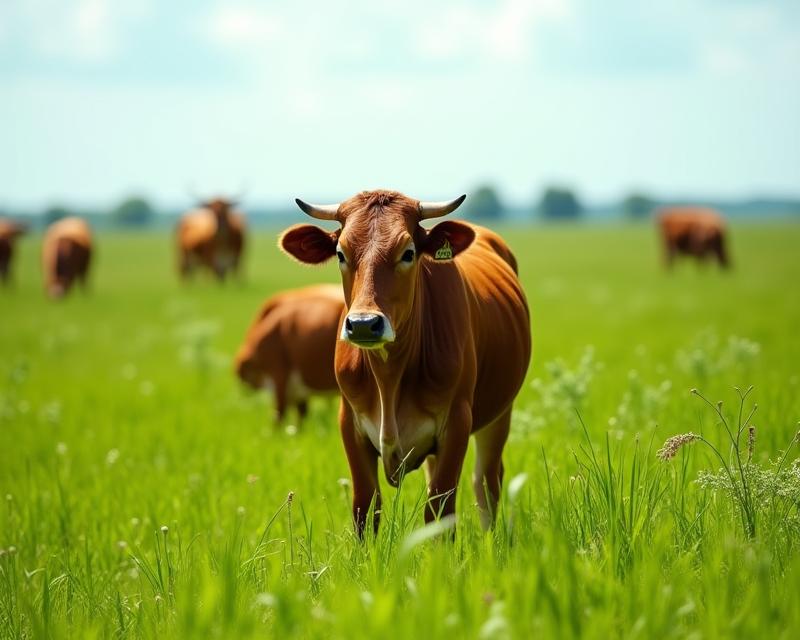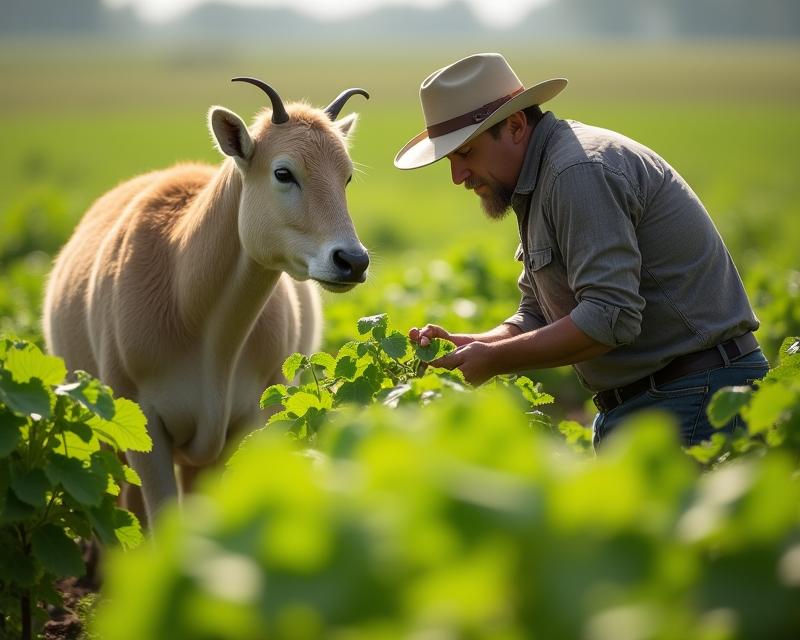Lablab & Cowpeas: Boosting Your Forage!
Publish in Sustainable Farming el 21/07/2025 01:05
Lablab & Cowpeas: Boosting Your Forage!
Forage is the cornerstone of a healthy farm, providing vital nutrition for livestock. While grasses form the base of most pastures, incorporating legumes like lablab and cowpeas can significantly enhance the nutritional value and overall productivity of your grazing lands. These nitrogen-fixing plants are a fantastic way to improve soil health and reduce reliance on synthetic fertilizers. Let's dive into why these legumes are so beneficial and how to get them growing in your pastures.

Nutritional Powerhouses
Legumes are renowned for their ability to fix atmospheric nitrogen, converting it into a form plants and animals can readily use. This means less need for expensive nitrogen fertilizers and a healthier soil ecosystem. Lablab and cowpeas are packed with protein, essential amino acids, and vitamins, making them a highly nutritious addition to a grass-based diet. For cattle, sheep, and goats, this translates to improved growth rates, better milk production, and enhanced overall health. The high protein content is particularly valuable during periods of rapid growth, like lactation or calf rearing. Furthermore, they contribute to better rumen function in ruminant animals, leading to more efficient digestion.
Sowing Tips for Success
Getting lablab and cowpeas established requires a bit of planning, but the rewards are well worth the effort. The best time to sow is typically in the spring after the last frost, when soil temperatures have warmed up. Aim for a well-drained location with plenty of sunlight. Prepare the soil by incorporating compost or manure to improve fertility. You can sow directly into the ground, spacing seeds 6-8 inches apart in rows 18-24 inches apart. Cowpeas benefit from slightly warmer soil temperatures than lablab. Consider a pre-soaking of the seeds for both crops to improve germination rates. Maintaining adequate soil moisture during the initial establishment phase is crucial. Once established, these legumes are relatively drought-tolerant, but consistent moisture will maximize their yield.
Mixed Forage Systems: A Winning Combination
Lablab and cowpeas thrive in mixed forage systems, complementing grasses beautifully. The combination provides a diverse range of nutrients and textures, appealing to a wider range of livestock. As the legumes mature, they add bulk and protein to the diet, while the grasses provide fiber and energy. Regular grazing management is key to maximizing the benefits of a mixed forage system. Avoid overgrazing, allowing the legumes to set seed and replenish the soil. With proper management, lablab and cowpeas can transform your pastures into a thriving, productive ecosystem, benefiting both your livestock and the environment. They are a simple and effective way to improve the sustainability of your farm!





